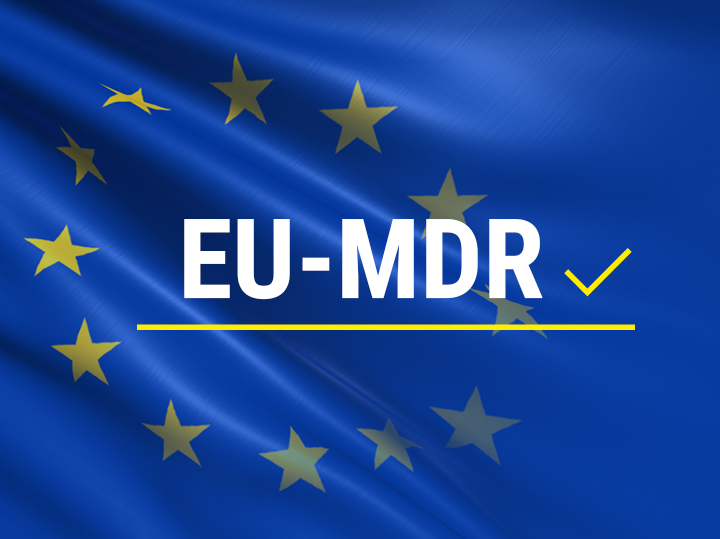Is ISO 13485 certification required?
The author is often asked by medical device start-ups and others to provide support consultation for ISO 13485 certification.
However. In Japan, the U.S., and Europe, ISO 13485 certification is not mandatory.
However, it should be noted that some countries require ISO 13485 or other certification as a condition for application for medical device approval.
In the case of Japan, it is sufficient if the QMS is established and operated in compliance with the QMS Ministerial Ordinance, while in the case of the U.S., it is sufficient if the QMS is established and operated in compliance with 21 CFR Part 820 QSR, etc.
In Japan, ISO 13485 certification may reduce (or exempt) on-site inspections when applying for an item, and there are advantages to obtaining ISO 13485 certification.
ISO 13485 certification is not mandatory in Europe either.
This is because the European CE marking system is self-declaratory.
It is sufficient to self-declare in a Declaration of Conformity that the design and manufacture of medical devices is carried out in compliance with EN ISO 13485. (However, many medical devices require certification by a third-party certification body.)
Handling of International Standards in Each Country
In Japan, international standards such as ISO/IEC are incorporated into JIS and then adopted into ministerial ordinances and basic requirement standards.
The QMS Ministerial Order, as amended in 2021, is based on JIS Q 13485:2018.
In the U.S., there is little interest in ISO certification in the public and private sectors.
However, the FDA may designate ISO/IEC as the Consensus Standard (recognized standard).
The FDA has now announced that the QSR will be revised as the Quality Management System Regulation (QMSR), harmonizing it with ISO 13485.
However, the FDA has a history of not recognizing ISO 13485 as a consensus standard.
In Europe, ISO/IEC is incorporated into EN ISO/IEC (EN standards), similar to JIS standards in Japan.
EN stands for European Norm; Norm is a quota, a standard to be achieved.
In general, international standards do not allow individual countries to revise the text and annexes.
EN standards are sometimes accompanied by Annex Zs, the EU’s own annexes to international standards.
Annex Zs may also contain information clearly stating whether conformance to the standard requirements constitutes conformance to regulatory requirements, such as MDRs, or the difference between the standard requirements and regulatory requirements, such as MDRs.
In terms of EU MDR compliance, it is very important to confirm Annex Zs of the EN standard.
What are Harmonized Standards in MDR (European Medical Device Regulation)?
In MDR, if a device conforms to a European harmonized standard (a national standard adopted by a device in accordance with a harmonized standard) or Common Specification (CS: Common Specification), it is considered to conform to the requirements for safety and performance (GSPR).
In demonstrating that the GSPR is met, it is almost mandatory to use the applicable harmonized European standard or CS, if any.
The existence of applicable harmonized European standards should be investigated as a manufacturer by means of a list of harmonized European standards.
As of January 4, 2022, nine new standards were recognized as harmonized European standards, making EN ISO 13485:2016 the harmonized standard for MDR. This is actually five years after the MDR went into effect.
Note that the number of harmonized standards accredited under the European MDR is 16 as of June 2022.
Benefits of complying with harmonized standards
Compliance with European harmonized standards is considered “Voluntary”.
The benefit of complying with harmonized European standards is “a presumption of conformity with the relevant legal requirements.
Manufacturers may also voluntarily select standards other than harmonized European standards (e.g., EU standards that are not harmonized, other international standards, etc.).
However, if there is an applicable harmonized European standard, but the company uses other methods to prove conformity to the GSPR (prove compliance with regulations), the company must be able to explain, based on evidence, that it guarantees safety at least equal to or better than the applicable harmonized European standard after examining the contents of that standard. The evidence must be based on a study of the content of the relevant harmonized European standard and an assurance of safety at least equivalent or better.
related product
[blogcard url=”https://ecompliance.co.jp/SHOP/O083.html” title=”【VOD】欧州医療機器規則(MDR)対応手順書作成セミナー【MDR対応手順書サンプル配布】” content=”MDR(Medical Device Regulation:欧州医療機器規則)は2021年5月26日から完全施行されました。日本の企業はMDRの全貌を適切に理解しておらず、対応が後手に回っていると思われます。
MDRは、FDAや日本の規制要件、および医薬品の規制要件などを参考に構築されており、いわば世界一厳しい医療機器規制要件となりました。
Manufacturer は、MDRの要求に従ってQMSを適切に改訂しなければなりません。
しかしながらMDRは条文が難解で非常にわかりにくいのが難点です。
いったいどのようなQMSを作成したら良いのでしょうか?
本セミナーでは、MDR対応QMSのサンプルを配布し、MDR対応QMSの構築方法を分かりやすく解説します。”]
[blogcard url=”https://ecompliance.co.jp/SHOP/EL-103.html” title=”【セミナービデオ】欧州医療機器規則(MDR)対応手順書作成セミナー【MDR対応手順書サンプル配布】” content=”MDR(Medical Device Regulation:欧州医療機器規則)は2021年5月26日から完全施行されました。日本の企業はMDRの全貌を適切に理解しておらず、対応が後手に回っていると思われます。
MDRは、FDAや日本の規制要件、および医薬品の規制要件などを参考に構築されており、いわば世界一厳しい医療機器規制要件となりました。
Manufacturer は、MDRの要求に従ってQMSを適切に改訂しなければなりません。
しかしながらMDRは条文が難解で非常にわかりにくいのが難点です。
いったいどのようなQMSを作成したら良いのでしょうか?
本セミナーでは、MDR対応QMSのサンプルを配布し、MDR対応QMSの構築方法を分かりやすく解説します。”]
[blogcard url=”https://ecompliance.co.jp/SHOP/MD-QMS-168.html” title=”【MDR対応QMSひな形】欧州指定代理人用手順書” content=”CEマーキングを貼付し、欧州に医療機器を輸出している医療機器企業は、MDDに置き換わって2021年5月25日までに欧州医療機器規則(MDR:Medical Device Regulation)に対応する必要があります。
製造業者(Manufacturer)は、この移行期間中に技術文書を改訂し、新しい要求事項に対応しなければなりません。
MDRは、従来のMDDと能動埋め込み型医療機器指令 Active Implantable Medical Device Directive (90/385/EEC)を統合し置き換えるものです。
MDDからMDRへの改正内容は多岐に渡り、また上市済の製品の対策も必要となるため、強制化に間に合うように計画的に対策を進める必要があります。
MDRは、日本や米国の法規制を参考にして作成され、世界で最も厳しい規制となりました。
しかしながらMDRは条文が難解で非常にわかりにくいのが難点です。
本邦におけるQMS省令や米国FDAのQSRにはない要求事項も含まれます。
そのため、多くのQMSに対して加筆修正が発生し、また追加で作成しなければならないQMSもあります。
本MDR対応QMSひな形を使用することで、より短時間で品質良くMDRに対応したQMSを構築することが出来ます。
納品形式:MS-Word”]
[blogcard url=”https://ecompliance.co.jp/SHOP/MD-QMS-169.html” title=”【MDR対応QMSひな形】サプライチェーン管理手順書” content=”CEマーキングを貼付し、欧州に医療機器を輸出している医療機器企業は、MDDに置き換わって2021年5月25日までに欧州医療機器規則(MDR:Medical Device Regulation)に対応する必要があります。
製造業者(Manufacturer)は、この移行期間中に技術文書を改訂し、新しい要求事項に対応しなければなりません。
MDRは、従来のMDDと能動埋め込み型医療機器指令 Active Implantable Medical Device Directive (90/385/EEC)を統合し置き換えるものです。
MDDからMDRへの改正内容は多岐に渡り、また上市済の製品の対策も必要となるため、強制化に間に合うように計画的に対策を進める必要があります。
MDRは、日本や米国の法規制を参考にして作成され、世界で最も厳しい規制となりました。
しかしながらMDRは条文が難解で非常にわかりにくいのが難点です。
本邦におけるQMS省令や米国FDAのQSRにはない要求事項も含まれます。
そのため、多くのQMSに対して加筆修正が発生し、また追加で作成しなければならないQMSもあります。
本MDR対応QMSひな形を使用することで、より短時間で品質良くMDRに対応したQMSを構築することが出来ます。
納品形式:MS-Word”] [blogcard url=”https://xn--2lwu4a.jp/qms-md/” title=”QMS(手順書)ひな形 医療機器関連” ]
]]>


Comment